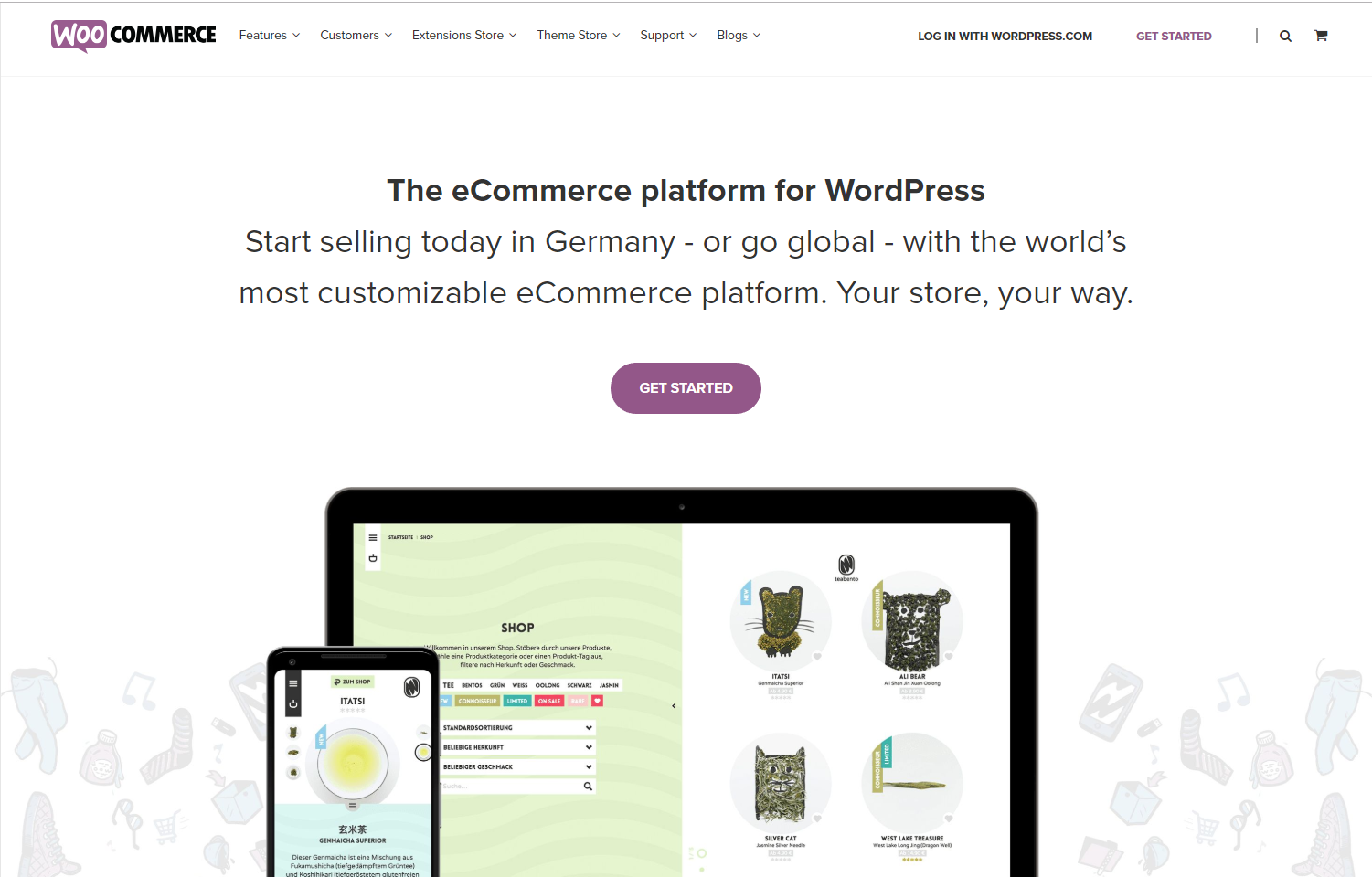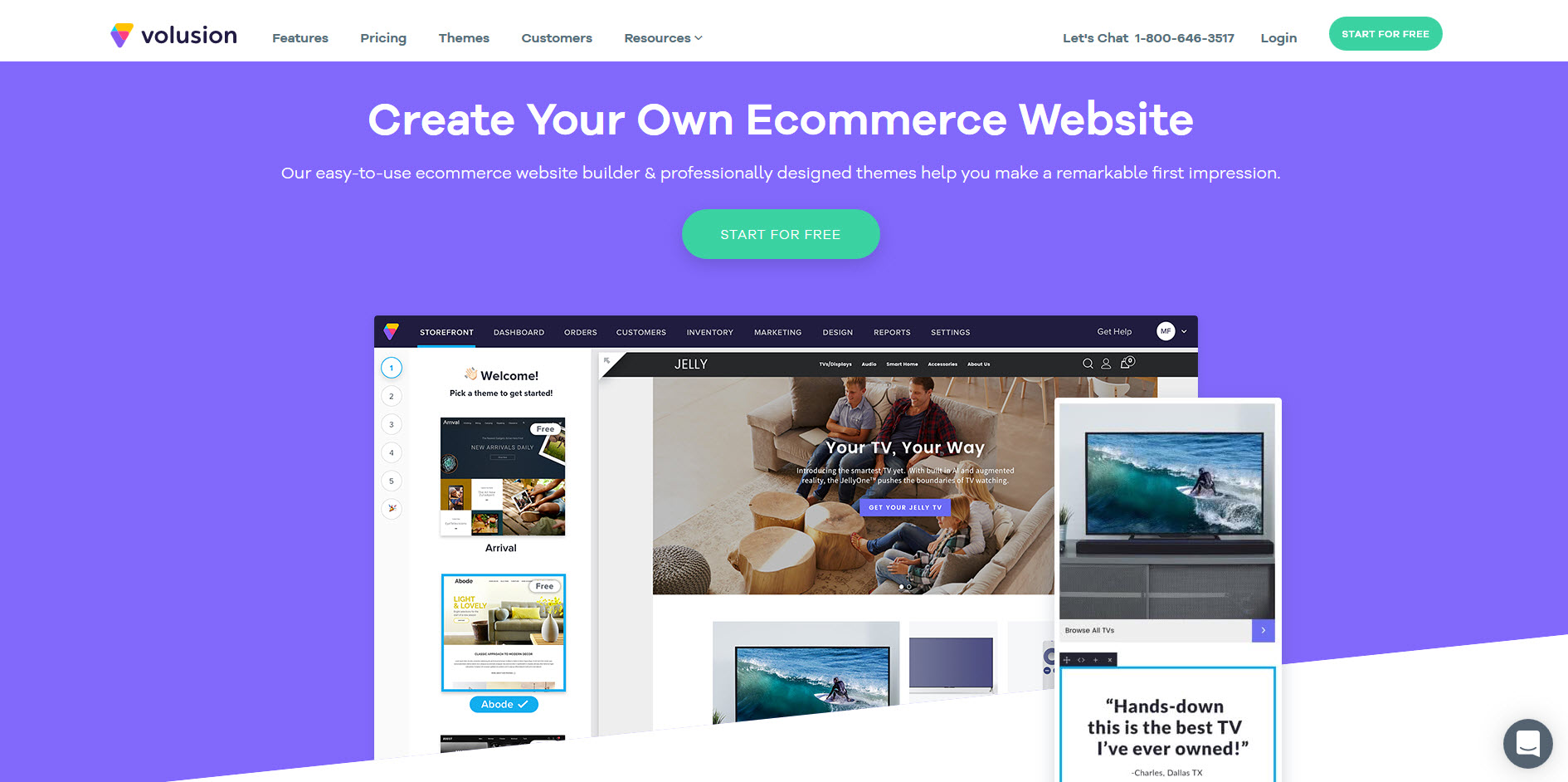How to Build a Dropshipping Store
With the bureaucratic part of the process now behind you, it is time to focus on your dropshipping store itself. How are you going to build your online store? With the proper technical background and design skills it is possible to build a site from scratch, but most of us depend on external tools that enable us to build a good site. Or, with sufficient budget, you could have a custom store built for you. If you want to tap into an enormous potential customer base without doing the groundwork first, you can register for an Amazon seller account and offer products on Amazon, although dropshippers’ options are somewhat limited by Amazon’s dropshipping policy.
Selling on Amazon

To be able to start selling on Amazon, the world’s biggest eCommerce marketplace, you need an Amazon Seller Account. You can choose from two possible options: an individual seller account that will cost you $0.99 per item sold (plus additional selling fees), or a professional seller account that costs $39.99 per month (plus additional selling fees), which will give you access to a lot more options and product categories than an individual account. Amazon uses 20+ different categories (30+ for Pro Sellers) to make it more convenient for users to go through the catalog, and offers several tools to help maximize results. For example, sellers can boost sales using Amazon ads and optimize product pages with the Amazon Ranking Optimizer.
Amazon employs a very strict dropshipping policy, which makes it very hard to sell third-party products on Amazon. If you have no problem to exclusively sell products supplied by Amazon-approved suppliers, you’ll be fine. If you insist on using a third-party dropshipping supplier of your choice, you should take into consideration that Amazon only allows this under the following strict conditions:
- You are the “seller of record” of the products you offer;
- You identify yourself as the seller of your products on all packing slips, invoices, external packaging, and other information included or provided in connection with them;
- You remove any packing slips, invoices, external packaging, or other information identifying a third-party drop shipper prior to shipping the order;
- You are responsible for accepting and processing returns of your products; and
- You comply with all other terms of your seller agreement and applicable Amazon policies.
Amazon specifically does not permit dropshipping in the following form:
- You purchase products from an online retailer who ships directly to customers; or
- You ship orders with packing slips, invoices, external packaging, or other information referring to a seller name or contact information other than your own.
You could jeopardize your Amazon selling privileges if you do not comply to the directives in this specific policy.
Pros of Dropshipping on Amazon
- Easy to get started, a seller account is all you need
- Large audience base (300+ million active users)
Cons of Dropshipping on Amazon
- Other options are cheaper
- Strong competition (2+ million Amazon sellers)
- Some categories require special approval and are limited to Pro sellers
- Dropshipping options are limited to Amazon-approved suppliers
eCommerce platforms such as Volusion and Shopify offer direct integration with Amazon as part of the options provided. With this option, dropshippers can bypass the Amazon policy for dropshipping and just follow the guidelines supplied by the eCommerce platform used to create their online dropshipping store.
Building a custom store
If you feel Amazon’s policy limits your dropshipping options too much, you’ll be happy to know there are other options to get started with dropshipping – without limitations upfront. One of these options is to build a custom store. If you have the skills to do this yourself, you could pull this off without major financial investments. But if you are not an advanced web developer with great design skills, you will need to hire a web developer to build a store from the ground up according to a design provided by a designer, including a CMS (content management system) for site management. A very costly scenario that also takes a lot of time. Unless you have sufficient budget and time, this option is not relevant.
You could also opt to create a custom store in WordPress, which would make the option much more relevant from any perspective. It will still require a lot of custom development, but the timeframe for this is manageable and the same goes for the necessary financial investment. The WooCommerce eCommerce plugin, specifically designed for use with WordPress, offers plenty of features to turn your online store into a dropshipping venture. Using this method can lead to great results, but it still requires you to have hands-on knowledge of and experience with both WordPress and WooCommerce to make the whole process efficient and fast. Also, you’ll need a developer to set up the core of the site and to implement a custom design.

Pros of building a custom site for dropshipping
- WordPress offers almost unlimited options for customization
- Dedicated eCommerce plugin (WooCommerce)
- Open source platform, not hard to find a developer with WordPress skills
Cons of building a custom site for dropshipping
- Setting up WordPress requires web development skills
- Building a WordPress site requires a significant investment of time and money
- Setting up dropshipping in WordPress requires users to know two platforms (WordPress & WooCommerce)
Definitely a good option, but not the fastest solution to setting up a dropshipping store.
Building an online store with an eCommerce platform
We want to start dropshipping as soon as possible, so we’re looking for a way to build our online store in a very short time. eCommerce platforms offer so-called store builder functionalities that help users set up a webstore in a matter of hours, offering standardized building blocks that can be customized at will to create a more unique look and feel. The most convenient part of working with an eCommerce platform is that it tells you which aspects of the store to take care of during the process of putting the store together. This makes the process really fast as well, which is how you’re able to build a store in a timeframe of just several hours.
Not all eCommerce platforms offer the same tools, but the differences are found in the range of features and elements a platform offers, the workflow and the ease of use – less in the tools that are offered. Leading eCommerce platforms such as Volusion and Shopify offer user-friendly website editors, a range of beautifully designed themes and built-in apps or seamless integrations with dropshipping suppliers.

Pros of using an eCommerce platform for dropshipping
- Extremely user-friendly, developed for fast results
- The best eCommerce platforms offer specific dropshipping tools, often packed in an onboard app that contains a range of dropshipping features
- Select your site’s design from a template library, filled with professional, modern looking templates/themes
- WYSIWYG (What-you-see-is-what-you-get) store editor
- Onboard tools or integration options for SEO, promotion/ advertising, payments, social media and more
- Strong focus on providing high-quality support
Cons of using an eCommerce platform for dropshipping
- Formulaic, chance of generating similar results to other stores that lack variety
- With an abundance of options, sometimes it can be hard to determine the best features or apps to use to customize your online store
- Some tools lack finesse, require additional development
When selecting the best eCommerce platform for your dropshipping business, you will want to check a number of elements related to the products you will sell. What options does the eCommerce platform provide to display products in your store? Can you choose your preferred supplier? Is there a direct connection to a supplier’s catalog? Does it take a lot of manual work to select products from a particular source and display them in your store? What about the ordering process? Is it automatic? Or do you have to manually send orders made in your store to the supplier? To answer these questions and find the best eCommerce platform for your business, make sure to check the following dropshipping integrations of each platform:
- Product catalogue
- Choice of supplier
- Product selection, categorization, import and display options
- Order process automation options
- Order fulfillment options
- Inventory syncing options
- Marketplace integrations (Amazon, eBay, Etsy, et cetera)
Here on top10dropshipping.com, we review and compare the leading eCommerce platforms to help you choose the best option for your needs. Check out our up-to-date list of the best eCommerce platforms for dropshipping.





